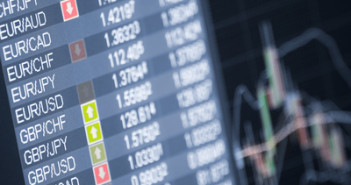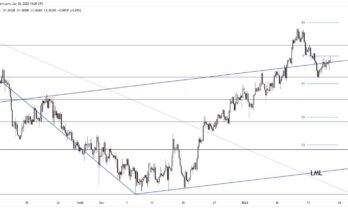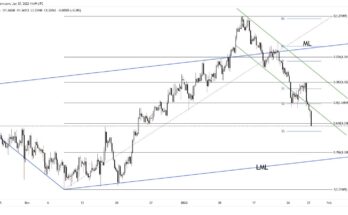Friday’s equity market rally on the back of the goldilocks jobs numbers out of the US is finding it a bit of a challenge to carry through the positive price action to Monday morning, as a few notable developments over the weekend have left market participants somewhat jittery to start the new trading week. The greenback is on firmer footing, but the support lent from the decent April employment figures has so far been insufficient at sparking a meaningful breakout. While Friday’s US jobs numbers weren’t great, the print above the 200k mark did alleviate some concern the weakness experienced in March had seeped through to the beginning of the second quarter. Wednesday of this week will bring around the release of retail sales for the month of April, which will be another key data point in assessing whether the US economy was able to rebound back from what will likely turn out to be negative GDP growth in the first quarter. Consumer spending saw a sharp slowdown over the course of the first quarter, but if this week’s numbers can build in on the positive print seen in March, the big dollar would likely find further support as the economic landscape in the US brightens.
Chinese equities started the week on positive ground, with investor risk appetite bolstered by the People’s Bank of China announcing an interest rate cut in an effort to alleviate some of the downward pressure the domestic economy is facing. This is the third interest rate cut in the last six months, and follows just three weeks behind the central bank lowering the reserve ratio requirements of banks in order help smooth out monetary policy by insulating against any negative effects associated with China’s economic structural adjustments. The government is also likely concerned with the pace of consumer price increases within the domestic economy, as data over the weekend showed that CPI increased by half the pace the government is targeting for 2015, coming in with a 1.5% increase when compared to the last twelve months, missing analysts’ estimates of a 1.6% gain. Given most of the CPI gains were witnessed in food prices, there is a good likelihood further accommodative monetary policy adjustments will need to be made over the coming months, though the central bank will be walking a fine line so as not to promote economic distortion through excessive easing. The Shanghai Comp finished its session up 3.05%, while commodity-linked currencies such as the kiwi and aussie failed to witness any positive price action that usually accompanies the increase in risk appetite.
In Europe, equities are mostly in negative territory as we go to print, with lack of positive developments in Greece weighing on investor risk appetite. Initial reports from today’s Eurogroup meeting have been downbeat, with a low probability of any sufficient accord being reached to unlock the tranche of aid Greece is seeking to shore up its finances. While it may be a forgone conclusion there will be no grand deal brokered at today’s meeting, the ECB will be looking to the finance ministers to provide guidance as to if there has been sufficient progress to warrant keeping collateral requirements at current levels, or succumb to the pressure of creditors and increase the haircut applied to Greek collateral. The latter scenario will increase the pressure on Greece to make a deal, as an increase in collateral requirements will bring forward the timeline of when Greek banks run out of funds, and solvency as opposed to liquidity becomes the concern for the country. The euro has been trading with an offer tone throughout the morning, with EURUSD edging back down into the mid-1.11s before the opening bell in North America.
As we get set for the North American session to kick-off, look for price action in equities to be dominated by headlines out of Greece, as the economic data is devoid of any tier one economic data. Hydrocarbons have managed to recoup some of their overnight losses ahead of the opening bell, though front-month WTI remains south of the $60 level. The loonie has followed oil step by step to begin the week, initially being well offered as oil prices sold off, only to see some of the weakness recouped midway through the European session. USDCAD continues to pivot around the 1.21 handle, though the frustrating price action for loonie bulls on Friday after the amount of full time jobs created in Canada failed to spark a meaningful rally might have some participants wondering if the significant low for USDCAD has indeed been reached.
Further reading:
USDCAD
EURUSD



